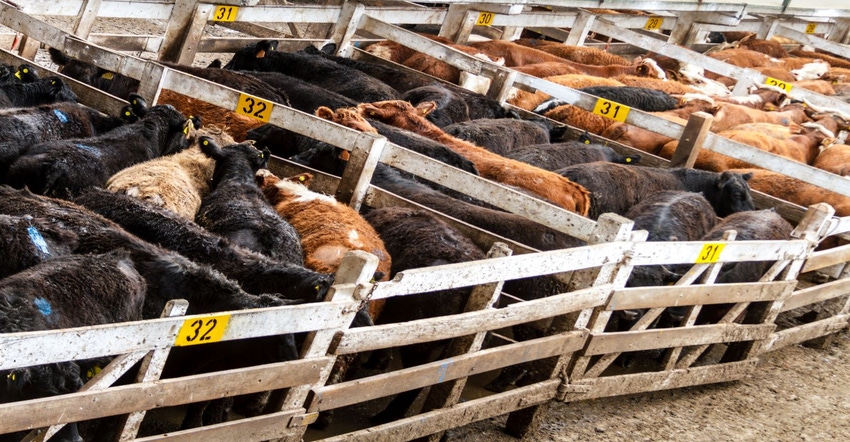Auction prices for feeder cattle in Oklahoma are dropping fast due to seasonal pressure and poor forage conditions.

Welcome rains fell across much of Oklahoma late last week with most areas receiving one-half to two inches of precipitation. September was exceptionally dry across the state with drought conditions building quickly.The Drought Monitor tells the story. The Drought Severity and Coverage Index (DSCI), calculated from the D0-D4 drought categories (with a possible range of 0-500), was at a low value of 8 for Oklahoma in the week of July 6, 2021, following heavy rains in June. The DSCI remained low through most of August and had a value of 17 the week of August 24.The DSCI in the latest Drought Monitor for Oklahoma jumped to 193 the week of September 28 with 93.55 percent of the state in D0-D4 including 20.32 percent in D0 (Abnormally Dry); 49.51 percent in D1 (Moderate Drought); 21.07 percent of the state in D2 (Severe Drought); and 2.65 percent in D3 (Extreme Drought). These values do not reflect the rains last week.
The latest USDA Crop Progress report showed that winter wheat planting was at 28 percent the last week of September, equal to the 2016-2020 average for the date. Wheat emergence was at 5 percent, slightly above the 5-year average of 3 percent for the end of September. Although the numbers are about average, general indications are that wheat pasture prospects are limited at this time. Some producers have “dusted in” wheat into dry soil, which will germinate quickly with the recent rains. Pockets of heavy rain may have crusted over fields with ungerminated or very small wheat and may require replanting.
Pasture conditions deteriorated rapidly in September. Range and pasture in good to excellent condition dropped from 58 percent at the end of August to 32 percent in late September. The percent of pastures in poor and very poor condition increased from 14 percent to 21 percent over the month. In the August Crop Production report, USDA forecasted 2021 Other Hay production in Oklahoma to be 8.3 percent higher year over year, an increase of 2.5 percent over the 2015-2019 average. The rapid decline in forage conditions in September may reduce that estimate somewhat. Alfalfa Hay, used primarily as a cash crop in Oklahoma, was forecast to decrease 15.8 percent year over year.
Auction prices for Oklahoma feeder cattle dropped last week reflecting seasonal price pressure and the deteriorating forage conditions. The rains late last week may help support prices some but the seasonal pressure of fall calf marketings will build in the coming weeks with the lowest seasonal price for calves expected in late October and early November. Heavy feeder cattle (over 700 pounds) typically do not drop seasonally in October and November. Feeder cattle prices are currently averaging about 8 percent higher compared to this time one year ago. Cull cow prices are also 8-9 percent higher year over year but are likewise showing seasonal pressure.On average, cull cow prices drop sharply through October to seasonal lows in November.
Source: Derrell Peel, Oklahoma State University, which is solely responsible for the information provided and is wholly owned by the source. Informa Business Media and all its subsidiaries are not responsible for any of the content contained in this information asset.
About the Author(s)
You May Also Like



